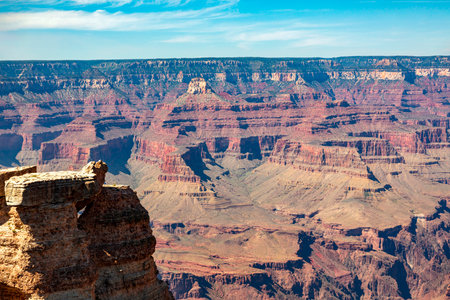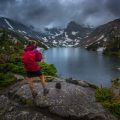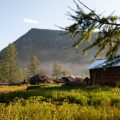Introduction to Camping in the Grand Canyon
The Grand Canyon is one of America’s most iconic national parks and a dream destination for campers from all over the world. With its breathtaking views, dramatic rock formations, and miles of hiking trails, it offers an unforgettable outdoor experience. Whether you’re setting up a tent under the stars or parking your RV at a scenic overlook, camping here is all about getting close to nature and soaking in the epic landscape.
What makes the Grand Canyon truly special for campers is the contrast between its North Rim and South Rim. Each side offers unique scenery, different weather conditions, and varied experiences. While both rims are part of the same canyon, they feel like two completely different worlds. Choosing between them—or deciding to explore both—can shape your entire trip.
Why Campers Love the Grand Canyon
- Stunning Vistas: Endless panoramic views that change with the light throughout the day.
- Diverse Hiking Trails: From beginner-friendly walks along the rim to challenging treks into the canyon.
- Wildlife Encounters: Mule deer, elk, California condors, and more can be spotted in various areas.
- Stargazing Opportunities: Designated as an International Dark Sky Park, it offers some of the best night skies in the country.
Best Times to Visit for Camping
| Season | Weather Conditions | Camping Tips |
|---|---|---|
| Spring (March–May) | Mild temperatures, occasional snow on North Rim | Great for fewer crowds; check if North Rim is open |
| Summer (June–August) | Hot in South Rim & inner canyon; cooler on North Rim | Most popular season; book campsites early |
| Fall (September–November) | Pleasant temps; chilly nights; North Rim closes mid-Oct | Ideal for hiking and photography |
| Winter (December–February) | Cold & snowy at both rims; limited access | Mainly for experienced winter campers; check road closures |
General Camping Regulations You Should Know
- Campsite Reservations: Required for developed campgrounds like Mather Campground (South Rim) and North Rim Campground during peak seasons.
- Backcountry Permits: Needed for any overnight camping below the rim. Apply through the park’s Backcountry Information Center.
- No Dispersed Camping: Unlike many national forests, random backcountry camping without a permit is not allowed within park boundaries.
- Leave No Trace: Always pack out what you pack in. Help preserve this natural wonder for future generations.
- Fires: Campfires are only allowed in designated fire rings and may be restricted during high fire danger periods.
The Grand Canyon isn’t just another campground—it’s a place where nature puts on a show every hour of the day. Whether you’re coming for peaceful solitude or an adventurous trek, knowing when to go and what rules to follow will make your camping trip safe, enjoyable, and unforgettable.
2. North Rim vs. South Rim: What’s the Difference?
If youre planning a camping trip to the Grand Canyon, one of the first decisions youll need to make is whether to visit the North Rim or the South Rim. Each side offers a unique experience, and knowing the key differences can help you choose the best fit for your adventure style.
Accessibility
The South Rim is more accessible year-round and is open 24/7, making it a popular choice for first-time visitors. Its about a 4-hour drive from Phoenix or a 5-hour drive from Las Vegas. In contrast, the North Rim is more remote and only open seasonally from mid-May through mid-October due to snow closures. It takes about 5 hours to reach from either Salt Lake City or Las Vegas.
Climate
The North Rim sits at a higher elevation (over 8,000 feet) compared to the South Rim (around 7,000 feet), which means its generally cooler and gets more snowfall in winter. Summer temperatures are milder on the North Rim, while the South Rim can get quite warm during peak summer months.
Crowd Levels
The South Rim is significantly more crowded, attracting around 90% of all Grand Canyon visitors. It has more facilities, viewpoints, and activities—but also long lines and busy trails. The North Rim offers a quieter, more peaceful atmosphere with fewer tourists, perfect if youre looking for solitude in nature.
Scenery
Both rims offer stunning views of the canyon, but they’re different in character. The South Rim provides iconic vistas and sweeping panoramic overlooks like Mather Point and Desert View. The North Rim showcases lush forests and dramatic cliffs with fewer obstructions—ideal for photographers and those seeking a different perspective of the canyon.
Types of Camping Available
Each rim offers different camping experiences, from developed campgrounds to backcountry sites. Heres a quick comparison:
| Feature | South Rim | North Rim |
|---|---|---|
| Developed Campgrounds | Mather Campground (open year-round), Trailer Village RV Park | North Rim Campground (seasonal) |
| Backcountry Camping | More permits available; access to popular trails like Bright Angel and South Kaibab | Fewer permits; less trafficked trails like North Kaibab Trail |
| Amenities | Lodges, visitor centers, shuttle buses, restaurants | Limited services; one lodge, fewer dining options |
| Crowds at Campgrounds | High demand; reservations recommended well in advance | Less crowded; still recommend booking ahead during peak season |
| Scenic Variety at Campsites | Mainly forested areas with some canyon views | More wooded and remote settings with peaceful surroundings |
Whether you choose the South Rim for convenience and classic views or opt for the North Rims serenity and cooler climate, both offer unforgettable camping experiences in one of America’s most iconic national parks.

3. Top Campgrounds on Each Rim
Whether youre pitching a tent or pulling up in an RV, the Grand Canyon has some amazing campgrounds on both the North and South Rims. From established sites with amenities to more rustic spots for seasoned adventurers, here’s a breakdown of the best places to stay under the stars.
South Rim Campgrounds
Mather Campground
Located inside Grand Canyon Village, Mather Campground is one of the most popular spots on the South Rim. It offers easy access to scenic viewpoints, hiking trails, and shuttle buses. The campground is open year-round and can accommodate both tents and smaller RVs (no hookups).
- Reservations: Highly recommended (especially March–November)
- Amenities: Restrooms, water, picnic tables, fire rings
- RV Info: No hookups; max length about 30 feet
Tusayan Ranger District – Dispersed Camping
If you’re looking for a free and more primitive experience, dispersed camping is available just outside the park boundary near Tusayan. This option is ideal for self-sufficient campers who don’t mind roughing it.
- Reservations: Not required
- Amenities: None (pack in/pack out)
- RV Info: Suitable for small to mid-sized RVs
North Rim Campgrounds
North Rim Campground
This is the main developed campground on the North Rim. Its quieter and more forested than the South Rim, offering a peaceful experience with cooler temperatures. The season here is short due to snow—typically mid-May through mid-October.
- Reservations: Required during open season
- Amenities: Restrooms, water, picnic tables, fire rings
- RV Info: Limited space; no hookups
Kodachrome Basin State Park (Nearby Hidden Gem)
Though not directly in Grand Canyon National Park, Kodachrome Basin in Utah is a lesser-known spot within driving distance of the North Rim. Its great for travelers taking a multi-park road trip and offers stunning views and full RV hookups.
- Reservations: Recommended
- Amenities: Showers, electric/water hookups, dump station
- RV Info: Full hookups available
Campground Comparison Table
| Campground | Rim Location | Amenities | RV Friendly? | Reservation Needed? |
|---|---|---|---|---|
| Mather Campground | South Rim | Restrooms, Water, Fire Rings | No hookups (up to ~30 ft) | Yes |
| Tusayan Dispersed Camping | South Rim (Outside Park) | None | Yes (Limited size) | No |
| North Rim Campground | North Rim | Restrooms, Water, Fire Rings | No hookups (Limited space) | Yes |
| Kodachrome Basin State Park | Near North Rim (Utah) | Full Amenities & Hookups | Yes (Full hookups) | Recommended |
No matter which rim you choose, there’s a campground that fits your style—whether youre after convenience or solitude. Make sure to book early during peak season and always follow Leave No Trace principles to keep these beautiful spots pristine.
4. Permits, Reservations, and Park Rules You Should Know
If youre planning a camping trip to the Grand Canyon, whether its at the North Rim or South Rim, its important to understand the permit system, reservation process, and park rules. This helps ensure a smooth trip and keeps you in line with National Park Service regulations.
Campground Reservations
Most developed campgrounds in Grand Canyon National Park require advance reservations, especially during peak season (May through October). Heres a quick breakdown:
| Campground | Location | Reservation Required? | How to Reserve |
|---|---|---|---|
| Mather Campground | South Rim | Yes (year-round) | Recreation.gov |
| Desert View Campground | South Rim | Yes (seasonal) | Recreation.gov |
| North Rim Campground | North Rim | Yes (seasonal) | Recreation.gov |
| Tuweep Campground | Remote North Rim area | Yes (permit only) | NPS Backcountry Permit Office |
Backcountry Camping Permits
If youre heading into the canyon for backcountry camping (anything below the rim), youll need a permit from the Backcountry Information Center. These permits are not available online and must be requested in advance by fax, mail, or in person.
How to Apply for a Backcountry Permit:
- Submit your request up to four months in advance of your start date.
- Use the Backcountry Permit Request Form.
- You’ll receive confirmation by mail or email if approved.
- A fee is required: $10 per permit plus $12 per person or stock animal per night.
Important Park Rules and Regulations
- No dispersed camping: You cant just pitch a tent anywhere within the park boundaries. Stay in designated sites or have a valid backcountry permit.
- No campfires below the rim: Fires are not allowed in most backcountry areas—use a portable stove for cooking.
- Leave No Trace: Pack out all trash, respect wildlife, and stay on marked trails.
- Quiet hours: 10 PM to 6 AM in all campgrounds—respect your neighbors!
- Bears and food storage: Use provided food storage boxes and never leave food unattended.
- No pets on inner canyon trails: Pets are allowed on certain rim trails but not below the rim unless they are service animals.
Pro Tips for Booking Campsites and Permits
- Book early: Campgrounds fill up fast, especially on the South Rim. Try to reserve 6 months ahead if possible.
- Be flexible: If your preferred dates are full, try weekdays or shoulder seasons like April or late October.
- Call if needed: The Backcountry Information Center can answer questions about routes and availability before you apply for permits.
- Have backups: Prepare alternate itineraries in case your first choice isnt available.
The Grand Canyon is one of Americas most popular national parks, so taking care of these details ahead of time will make your camping adventure much more enjoyable—and stress-free!
5. Packing Essentials and Camping Tips for the Grand Canyon
Whether youre heading to the North Rim or the South Rim of the Grand Canyon, packing right is key to a successful camping trip. The terrain, elevation, and weather can vary greatly, so youll need to be prepared for anything. Heres a breakdown of essential gear, safety tips for desert camping, and how to handle elevation changes and extreme weather.
Must-Have Gear Checklist
| Item | Why You Need It |
|---|---|
| 4-Season Tent | Protects against wind, rain, and cold nights at high elevations |
| Sleeping Bag (Rated for 20°F or lower) | Nights can get very cold, even in summer months |
| Sleeping Pad or Air Mattress | Adds insulation and comfort on rocky ground |
| Portable Stove or Campfire Grill | Some areas restrict open fires—check local fire regulations |
| Water Storage & Filtration System | Essential due to limited water sources in many areas |
| Sun Protection (hat, sunglasses, SPF 50+ sunscreen) | The desert sun is intense and unforgiving |
| Layered Clothing (including insulated jacket) | Helps adjust to temperature swings from day to night |
| First Aid Kit with Blister Treatment | A must-have for hikes and minor injuries |
| Map, Compass, or GPS Device | Cell service is limited; don’t rely solely on your phone |
| Headlamp or Flashlight with Extra Batteries | Nights are pitch black in remote areas of the canyon |
Safety Tips for Desert Camping
- Hydrate constantly: Always carry more water than you think youll need. Dehydration happens fast in dry climates.
- Avoid hiking during peak heat: Try to hike early morning or late afternoon to avoid the hottest part of the day (usually noon to 4 p.m.).
- Watch out for wildlife: Keep food sealed and stored properly. Never feed animals—it’s unsafe for both you and them.
- Pace yourself: The dry air and elevation can tire you out quicker than expected. Take breaks often.
Preparing for Elevation Changes & Weather Extremes
Understanding Elevation Differences Between Rims
The North Rim sits at about 8,000 feet above sea level, while the South Rim is around 7,000 feet. This means cooler temperatures and thinner air on the North Rim. If youre coming from sea level, take it easy your first day to acclimate.
Dressing for Variable Conditions
| Time of Day | What to Expect | What to Wear |
|---|---|---|
| Morning (5–9 a.m.) | Crisp and cool; possibly below freezing at higher elevations | Base layer + insulated jacket + hat/beanie |
| Noon–Afternoon (12–4 p.m.) | Hot sun; temps may reach mid-90s°F in summer at lower elevations | Breathable shirt, sun hat, sunglasses, sunscreen reapplication every 2 hours |
| Evening (6–10 p.m.) | Drops rapidly; winds pick up especially on exposed ridges/campsites | Light fleece + windbreaker or shell layer |
A Few More Pro Tips:
- If youre planning backcountry camping on either rim, secure permits well in advance—these spots fill up quickly.
- Bungee cords or rope come in handy for securing tents or tarps during windy conditions.
- A bandana or buff can protect your face from dust storms—yes, they happen!
- Trekking poles are helpful when navigating steep trails or carrying heavy packs.
The Grand Canyon offers some of the most breathtaking campsites in America—but being prepared can make all the difference between a magical adventure and a miserable experience.


